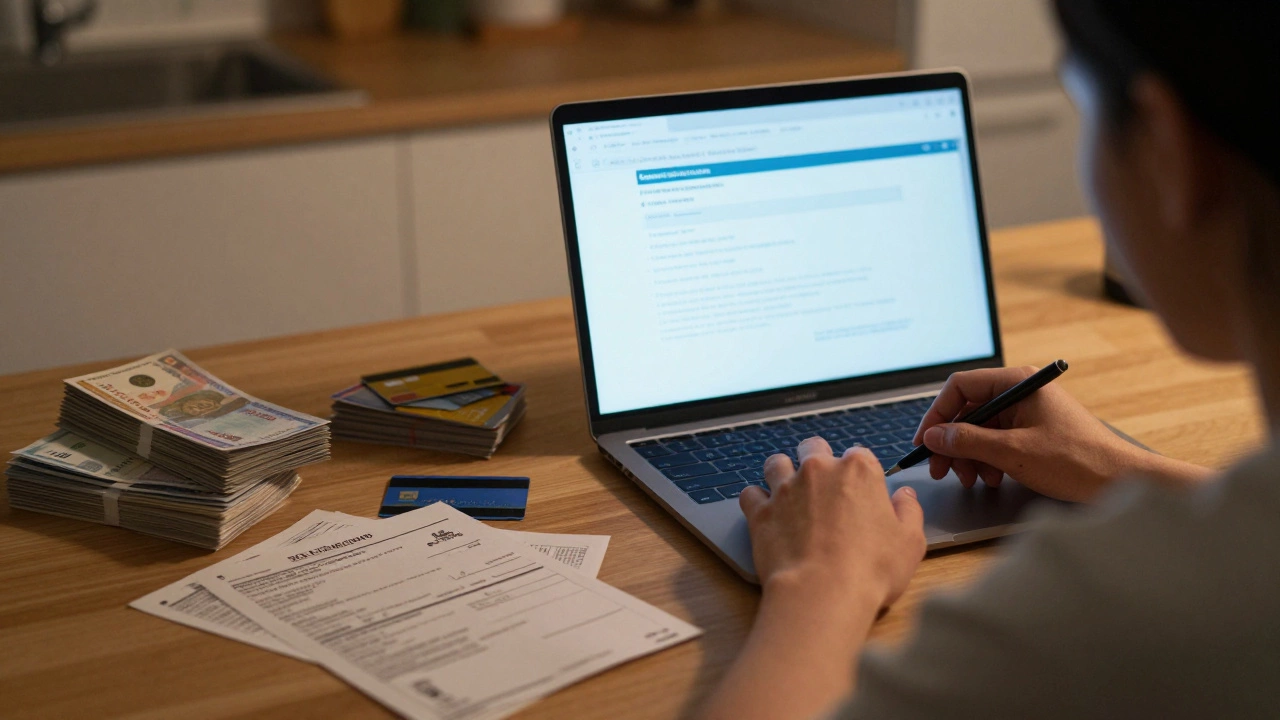Bank Account Average: What It Means and How to Use It
When talking about Bank Account Average, the typical amount of money held across your personal accounts over a set period. Also known as average balance, it helps you see if you’re saving enough or paying too much in fees.
Why Knowing Your Bank Account Average Matters
Understanding your Bank Account Average is the first step to smarter money decisions. It lets you spot hidden costs, compare interest earnings, and benchmark your habits against national figures. For example, the Interest Rate, the percentage a bank pays on deposits or charges on loans directly affects how much your average balance will grow (or shrink) each month.
Most people think the amount in their account is just a number, but that number tells a story. A higher average balance usually means you’re keeping more cash on hand, which can increase the interest you earn. On the flip side, a low average might indicate you’re spending more than you save, or that you’re keeping money in low‑interest checking accounts where fees can eat into every pound.
Speaking of accounts, not all are created equal. A Savings Account, a deposit account that typically offers higher interest rates and limited withdrawals is built for growing your average balance, while a regular checking account focuses on transaction convenience. Knowing which one contributes most to your average helps you allocate funds where they earn the best return.
Calculating your bank account average is easier than you think. Add up the daily closing balances for a month, then divide by the number of days in that month. The formula looks like this: (Sum of daily balances) ÷ (Number of days). Most online banking dashboards already show a monthly average, but doing it yourself lets you double‑check the numbers and spot any anomalies.
Let’s walk through a quick example. Imagine you start the month with £1,000, deposit £500 halfway through, and withdraw £200 near the end. If you add each day’s balance and divide by 30, you might end up with an average of about £1,220. That figure shows you’ve actually been holding more cash than the £1,000 you started with, which can be useful when comparing interest offers.
Now, here’s where Bank Fees, charges such as monthly maintenance, overdraft or transaction fees come into play. Even a modest £5 monthly fee cuts directly from your average balance, reducing the interest you could have earned. If your account pays 0.5% interest, that £5 fee cancels out roughly £30 of potential earnings over a year.
Interest rates and fees are two sides of the same coin. A higher interest rate can offset modest fees, but only if your average balance is large enough to generate noticeable interest. Conversely, a low‑interest account with high fees can quickly turn a positive average into a net loss.
Because your average reflects both earnings and costs, it’s a solid benchmark for comparing banks. Look for institutions that offer a higher interest rate on the same average balance while keeping fees minimal. Some challenger banks even waive fees if your average stays above a certain threshold, turning your balance into a negotiating tool.
Several free tools can automate the calculation. Personal finance apps like Money Dashboard or YNAB pull transaction data, display daily balances, and compute the average for you. Using these apps not only saves time but also helps you visualize trends over months and years.
Beware of common pitfalls. Seasonal spikes—like a tax refund or bonus—can inflate your average for a single month, giving a false sense of steady growth. Inflation also erodes the real value of your average, so consider the purchasing power when evaluating long‑term trends.
To improve your bank account average, try a few simple tactics: set up a direct deposit that lands into a high‑interest savings account, avoid unnecessary monthly fees by meeting balance thresholds, and schedule regular transfers to keep your average from slipping.
Armed with this background, you’re ready to dive into the detailed guides below. You’ll find step‑by‑step methods for calculating your average, tips for cutting fees, and advice on picking the right savings or checking account to make your money work harder.

Average American Bank Account Balance 2025: How Much Money Do U.S. Households Hold?
Discover the latest figures on how much cash the average American keeps in checking and savings accounts, why the numbers shift, and practical tips to boost your own bank balance.





